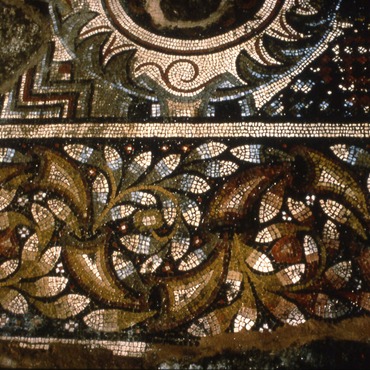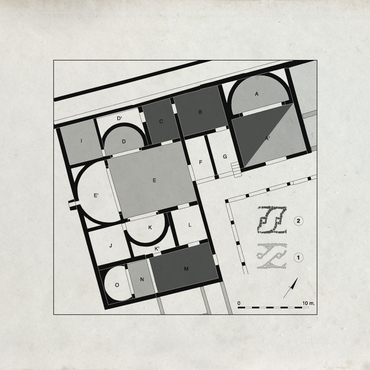
- Home
- Loupian, a villa in Gallia Narbonensis
- The residence in Late Antiquity
- Two styles, two workshops
The Loupian mosaics have two stylistic sources. Those in the reception rooms are reminiscent in many ways of Late Antique creations from Aquitaine. One can detect a preference for naturalistic patterns – with a heavy reliance on grapevines – either as filler elements or as the principal décor. In the trilobed, they are associated with allegorical elements, such as the frieze of cornucopia in apse E', or with architectural depictions, such as the portico columns in the main room E.
The secondary rooms feature rainbow-style compositions, a style that became popular in Syria starting in the late 4th century. These mosaics are characterised by a stricter geometric repertoire, as well as by specific motifs, such as dotted lines and shaded accolades. The octagonal-shaped composition in room B is frequently employed in Antioch. The crosses made of U-shapes in rooms J and E are rare Gallic examples of a decorative scheme that was popular in the eastern Mediterranean.
Two workshops were responsible for the commission. A single type of marble was used in rooms with two different styles. Different "hands" have been identified as having created simple, recurring motifs such as interlace patterns. These "signatures" serve to identify their respective efforts and to confirm stylistic interpretations.
